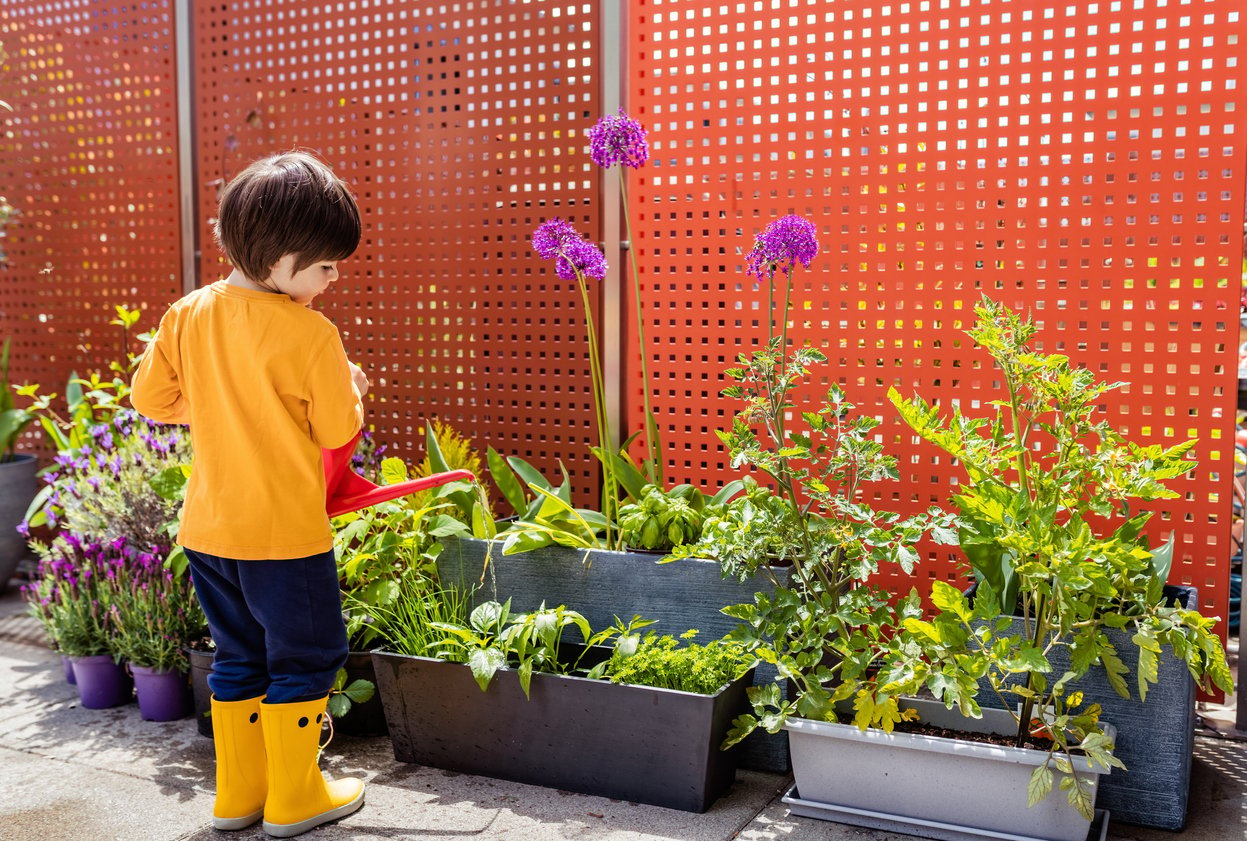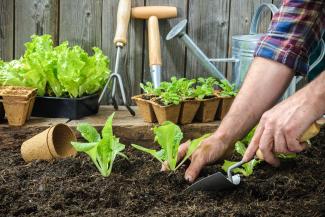Growing your own vegetable garden is a very rewarding experience. Not only will you enjoy freshly grown food, but you’ll also get closer to nature, reap the mental and physical benefits of gardening as a hobby and live more sustainably at a time when caring for the environment is becoming increasingly important.
Another reason why you may consider growing your own vegetables at home is that it can be more cost effective – and much tastier too. According to Better Homes & Gardens, growing one tomato plant can cost as little as £2 to £4 but it can provide up to 10 pounds of tomatoes over a season and save you over £16[1]. Not only will you be saving, but you’ll be also enjoying a much better flavour and texture of your very own garden-grown produce.
Additionally, tending to your own vegetables can help to keep you active and contribute to a better work-life balance, while improving your wellbeing and health[2]. Plus, everyone would agree, there is a true sense of pride and joy in growing your own vegetables. You’ll be feeding your family with the fruit of your own hard work, be independent and embrace a healthier diet.
Gardening is an ideal activity for the whole family to get involved in, especially young children. Involving your children in growing and maintaining your vegetable garden at home can help cultivate in them a sense of responsibility by learning how to care for plants; it can also build their self-confidence as they acquire new skills and instil in them love for nature.
The benefits of planting and growing your own vegetables from scratch are numerous. However, this can also seem like a daunting task, especially if you’ve never done anything like it before. From picking the right site, and creating the right-size garden, to selecting which vegetables to grow and knowing how to care for them. Where do you start? To help put your mind at ease, we have prepared five useful tips on how to get it right the first time and grow your own vegetable garden successfully.
1. Pick the right location
It may seem obvious but vegetables love sunlight. Therefore, selecting a sunny spot for your garden can be of paramount importance. To grow well, most vegetables need 6 to 8 hours of direct sunlight per day, but should you have a garden that does not benefit from sunlight all day round, fear not – you can still grow your own vegetables. The types of veggies that will tolerate some shade are mostly leafy ones, such as chard, spinach and salad greens, so you would need to keep that in mind when choosing the right variety.
Another important prerequisite for a good vegetable garden spot is that it drains well and doesn’t stay wet. Planting your veggies in soil where water accumulates can result in rotted roots and kill your plants, so you’ll want to make sure water drains well where you’re planning to start your new garden. Having nutrient-rich soil is important too, and an easy way to achieve that is by mixing in plenty of organic matter to help your plants grow. Next, it’s time to prepare the soil by removing weeds and adding well-rotted compost or manure, and rake level.
2. Start small
It’s always recommended to start small by growing only the vegetables that you know you and your family will eat, and gradually expanding your plot once you’ve built up your confidence. Being proud of a small garden is so much better than facing disappointment with a big one. It’s easy to get excited and commit to planting more plants than you can actually care for, but this can create a whole set of challenges, from growing more than you can eat, to not having sufficient time to look after all vegetables, to running out of storage space once they’re ripe.
So how do I know how many vegetables to plant, you ask? Deciding on the most optimum number of vegetables will depend on the size of your plot and the method of planting. For a 10’ x 10’ garden (100 square feet) where veggies are being planted in the ground 3 to 5 vegetables, or 3 to 5 plants of each one, will be enough to get you started[3]. If you’re planting in a raised bed, a 4’ x 4’ or 4’ x 8’ is believed to be a good beginner plot size. You can also go bigger with a 12’ x 24’ garden where your veggies are planted in the ground, but anything bigger than that might prove challenging. A key thing to remember, which can be often overlooked by garden novices, is to leave paths to access your plants. Experts recommend leaving paths for weeding and harvesting your veggies at every four feet or so.
All in all, plan your garden with care and remember – always start small.

3. Choose a location with convenient water access
Choose a site with convenient access to a reliable water source. This is because you’ll need a good water supply throughout the season when you decide growing your vegetables. Especially in the beginning, you'll need to be able to water your vegetables frequently during the first few weeks to help them produce strong roots and stems. Then once your plants are established, your garden will require plenty of water every few days rather than only a little every day so that the roots of your delicious veggies can grow deeper and stay healthy – until they’re ready to be harvested.
4. Choosing your vegetables
These would also need to be veggies that you and your family love, to avoid any waste. Some of the easiest and most productive vegetables out there include lettuce, green beans, radishes, tomatoes, zucchini, peppers, beets, carrots, chard, spinach, or kale, and peas. If any of these are a staple on your dinner table, it’s time to roll up your sleeves and get planting.
Be prepared to take care of your plants throughout the growing season. If you’re opting for seeds instead of plants, buy high-quality seeds. A little bit extra spent in spring for that year’s seeds will pay off in higher yields at harvest time.
5. Consider how much time and effort you can set aside
Consider how much time and effort you can set aside to look after your garden[4]. Tomatoes, albeit hugely popular and tasty, require staking and training, protecting from blight and only crop outdoors for a few weeks in late summer. In contrast, runner beans give abundant crops over a long period and are much lower maintenance. Asparagus are excellent and so easy to grow. Once a bed is established, they only require some routine maintenance once a year in exchange for up to 10 years of abundant crops.
And just like that you’re ready to start your very own vegetable garden at home. Bon Appétit.





